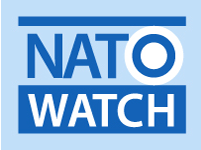31 October 2023
Overview
The Russia-Ukraine war, which began in the spring of 2014 with Moscow’s annexation of Crimea and was transformed by Russia’s full-scale invasion in February 2022, shows no sign of ending. It has been for some months now widely characterized as a grinding war of attrition, as the casualties, destruction and collateral damage have reached proportions not seen since World War II. Ukraine’s summer offensive appears to have stalled while Russia’s biggest offensive in months on the eastern Ukrainian town of Avdiivka in the Donetsk region also appeared to be failing.
The stalemate is unlikely to be broken by the delivery to Ukraine of an undisclosed number of US long-range Army Tactical Missile Systems (ATACMS). President Zelensky confirmed on 17 October that Kyiv has already deployed the ATACMS, which can strike targets more than 100 miles away and deliver salvoes with cluster munitions. They were probably used to strike airfields in Russian-held territory in eastern and southern Ukraine, destroying helicopters, knocking out an air defence missile launcher and damaging runways. On the 18 October President Putin called the supply of ATACMs “another mistake by the United States” and claimed that it would “simply prolong [Ukraine’s] agony”. While they may help Ukraine even-up the battlefield, like earlier high-profile transfers of tanks, cluster munitions and combat aircraft (the latter mainly just pledges for now), the ATACMs are unlikely to prove decisive, even if supplied in larger numbers.
With attention shifting to the growing conflict in the Middle East and the war in Ukraine largely stalemated, war fatigue and revolt appears to be growing on multiple fronts. First, with Russian forces reportedly suffering some of its highest casualty rates of 2023 in seeking to capture Avdiivka, the morale of Russian forces is likely to be low. The White House even claimed on 26 October that Russia was executing soldiers who failed to follow orders and was threatening entire units with death if they retreat from Ukrainian artillery fire.
Second, the lack of a breakthrough in Ukraine’s summer offensive suggests that morale among the Ukrainian forces is also likely to be subdued. As an indication of Ukrainian weariness with the war, protesters gathered on the streets of Ukrainian cities on 27 October to demand a cap of 18 months on mandatory military service. Given that it has fewer troops and less ammunition, and faces major obstacles in attempting to recover occupied territory, Kyiv will need to fight carefully just to maintain the status quo, let alone regain the initiative. There is also a danger that in pursuing a strategy of complete victory encouraged by Washington and NATO, Ukrainian forces will become so depleted that it eventually opens the way for a Russian counterattack that costs Ukraine much more territory.
Third, international 'Ukraine fatigue' appears to be growing among Ukraine’s allies, both within governments and more widely among the public in North America and Europe. Economic hardship in Europe as a result of the war and sanctions is leading to social and political unrest, including electoral support for extreme right parties (as witnessed in state elections in Germany and the national election in Slovakia). And in the United States, recent political turmoil over the election of a new Speaker of the US House of Representatives has added to jitters over the future of military funding for Ukraine. Although European leaders rallied around Ukraine at the European political community summit in Spain on 5 October, the gap between Ukrainian hopes and what the West can deliver (including on EU and NATO membership) also appears to be growing.
Despite the bloody stalemate and this growing war weariness, diplomacy to end the war remains stalled.
Contents:
Overview
Russian attacks on civilian infrastructure
Ukrainian attacks inside Russia and in Crimea
The risk of NATO’s direct involvement in the war
Stalled diplomacy
Military and financial assistance to Ukraine and Russia
Humanitarian consequences of the war
Continuing concerns over nuclear power plants
Further reading:
On outcomes and consequences of the war
On the risk of nuclear war
On investigation of war crimes in Ukraine
On the Black Sea grain agreement and global food security
On sanctions against Russia and post-war reconstruction in Ukraine
On energy security in Europe (and the Nord Stream attack)
On China’s position on the war
On developments within Russia
On Ukraine’s NATO and EU membership applications and other developments
Read more in the attached pdf
| Attachment | Size |
|---|---|
| nato_watch_update_52_1.pdf | 491.59 KB |
